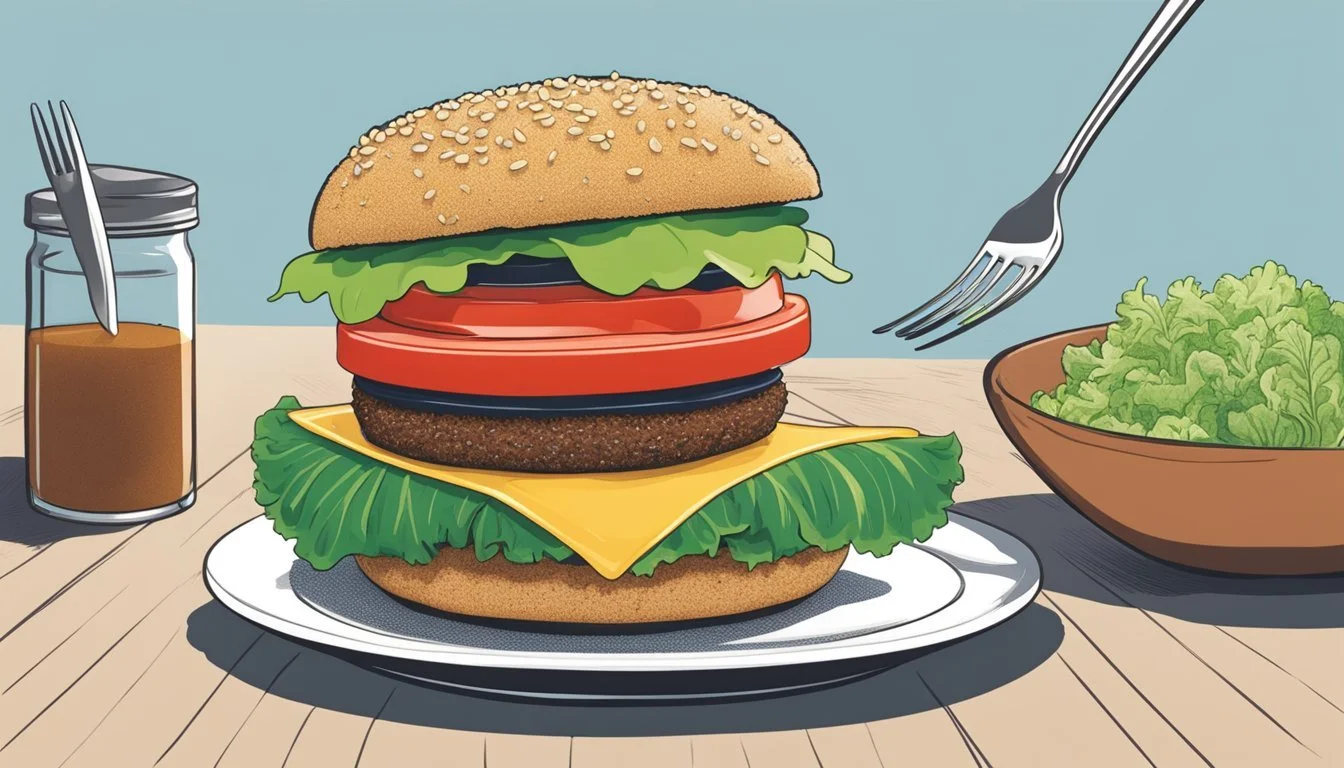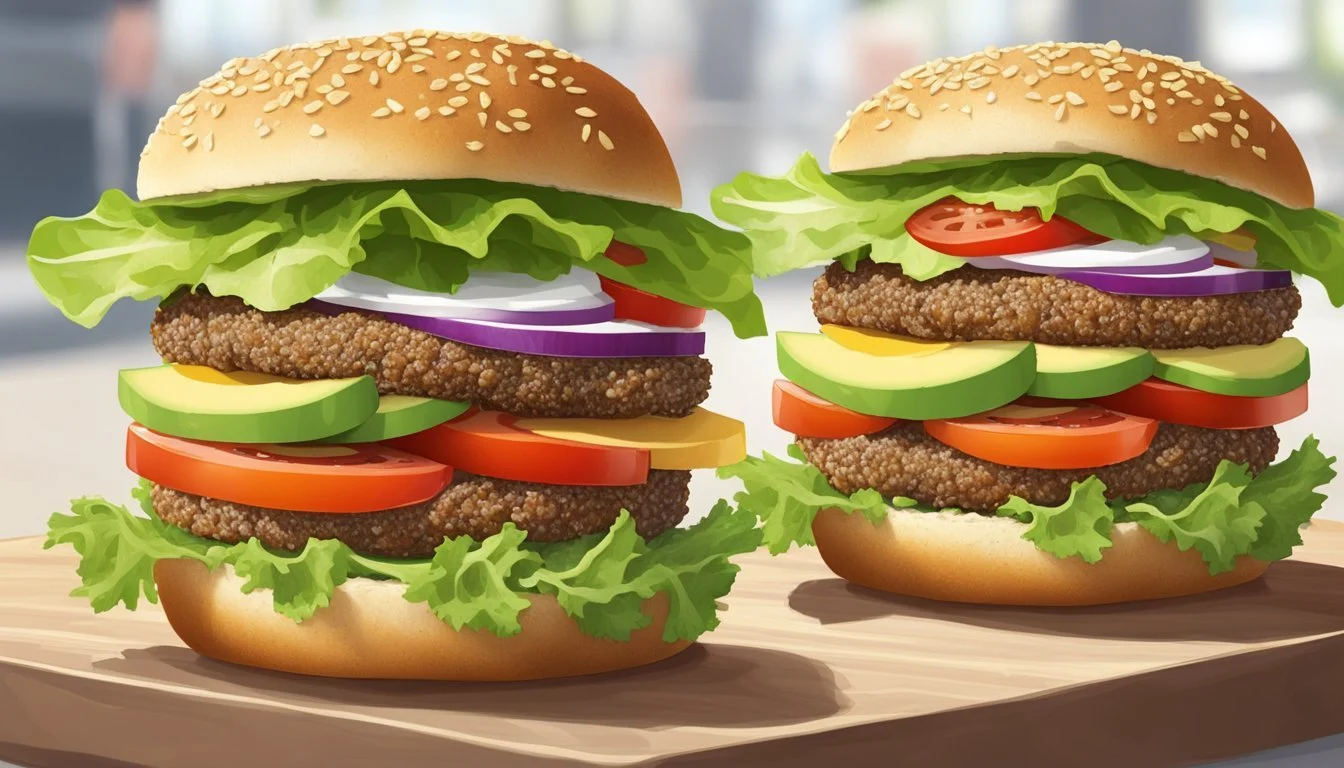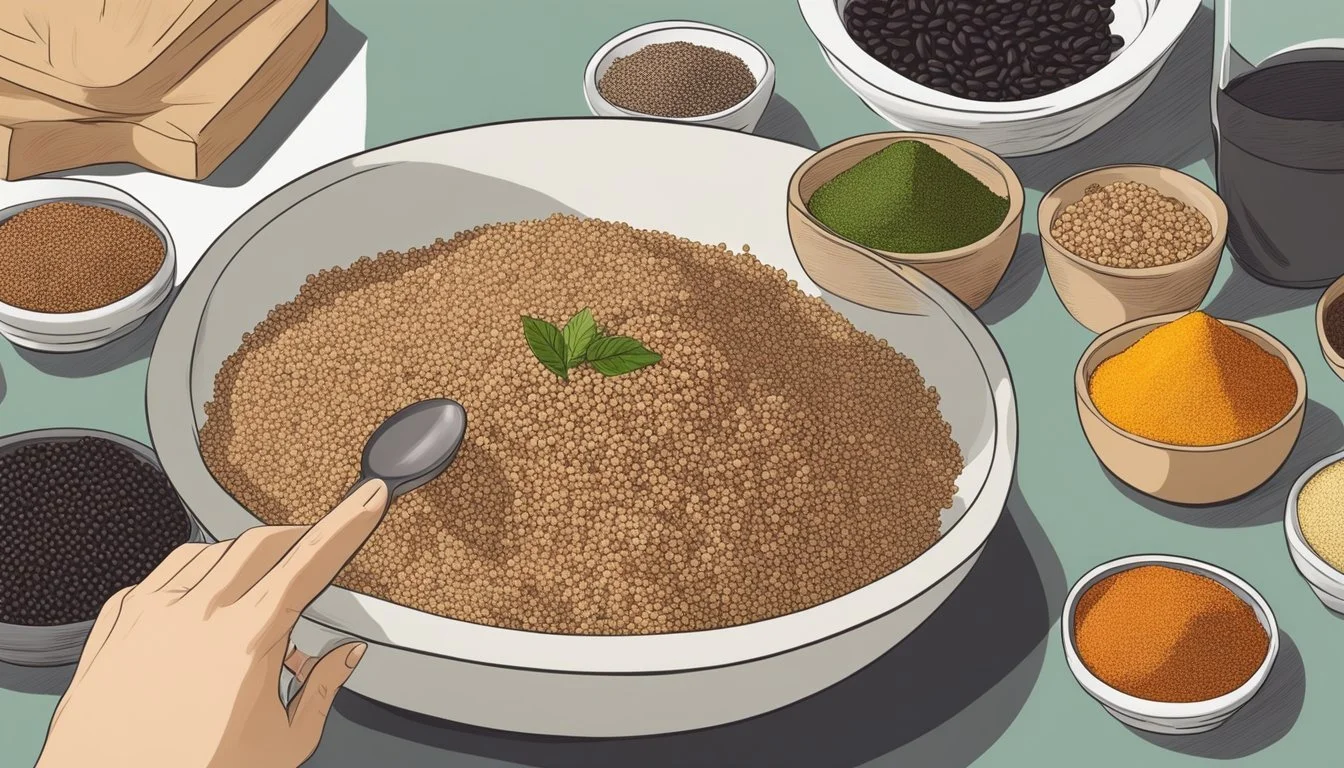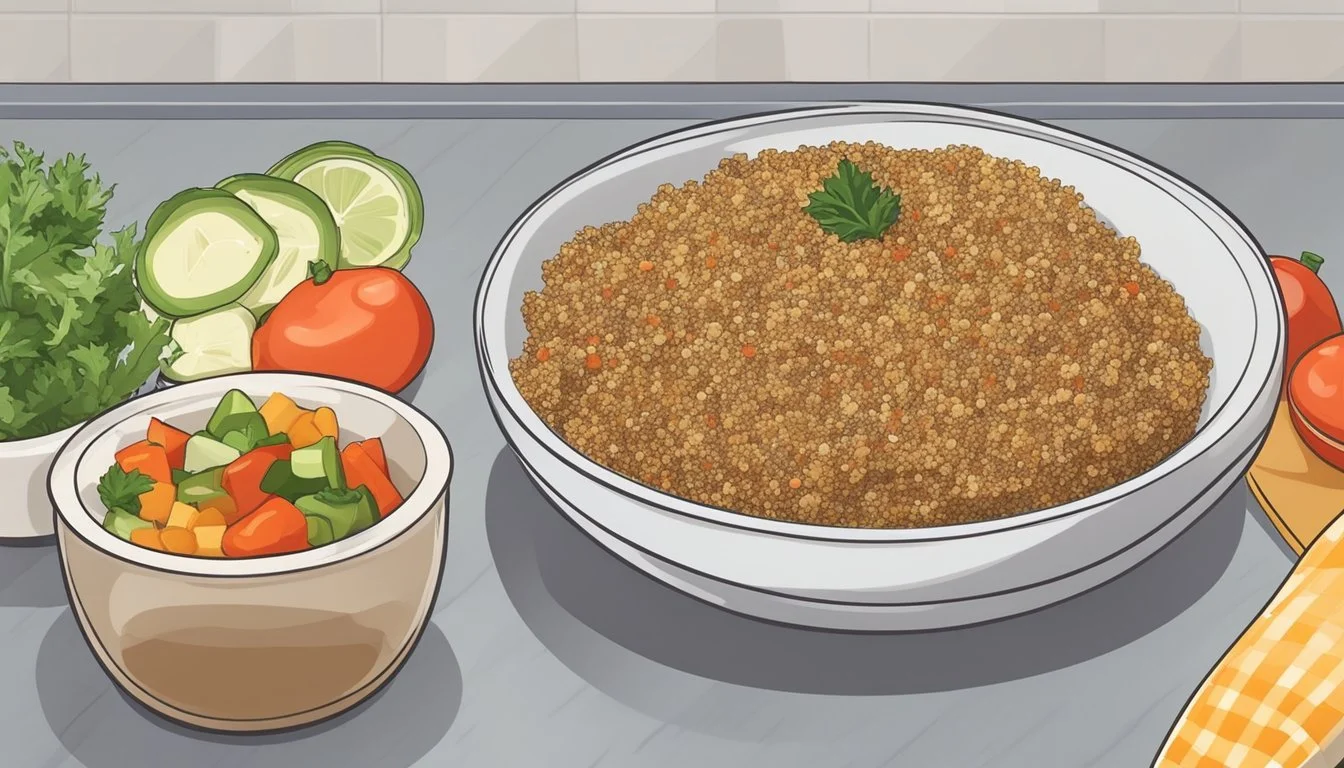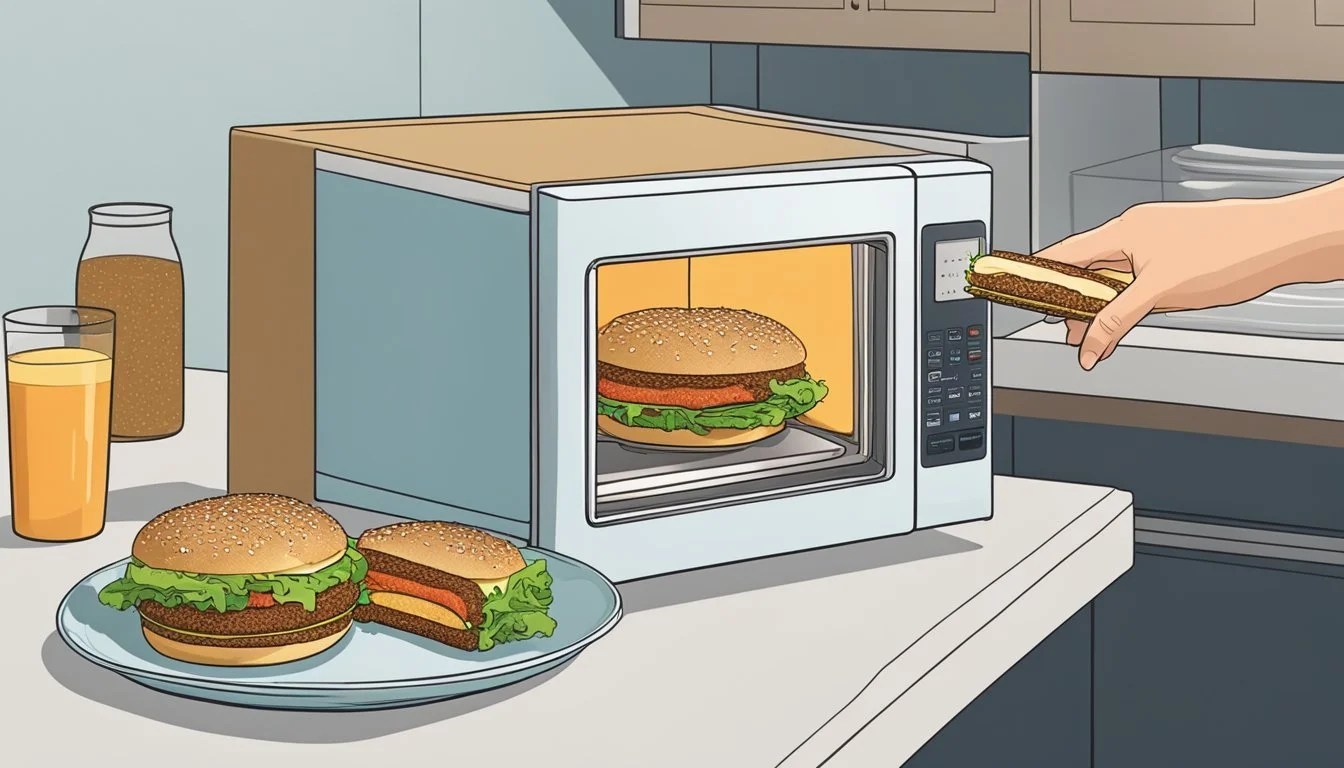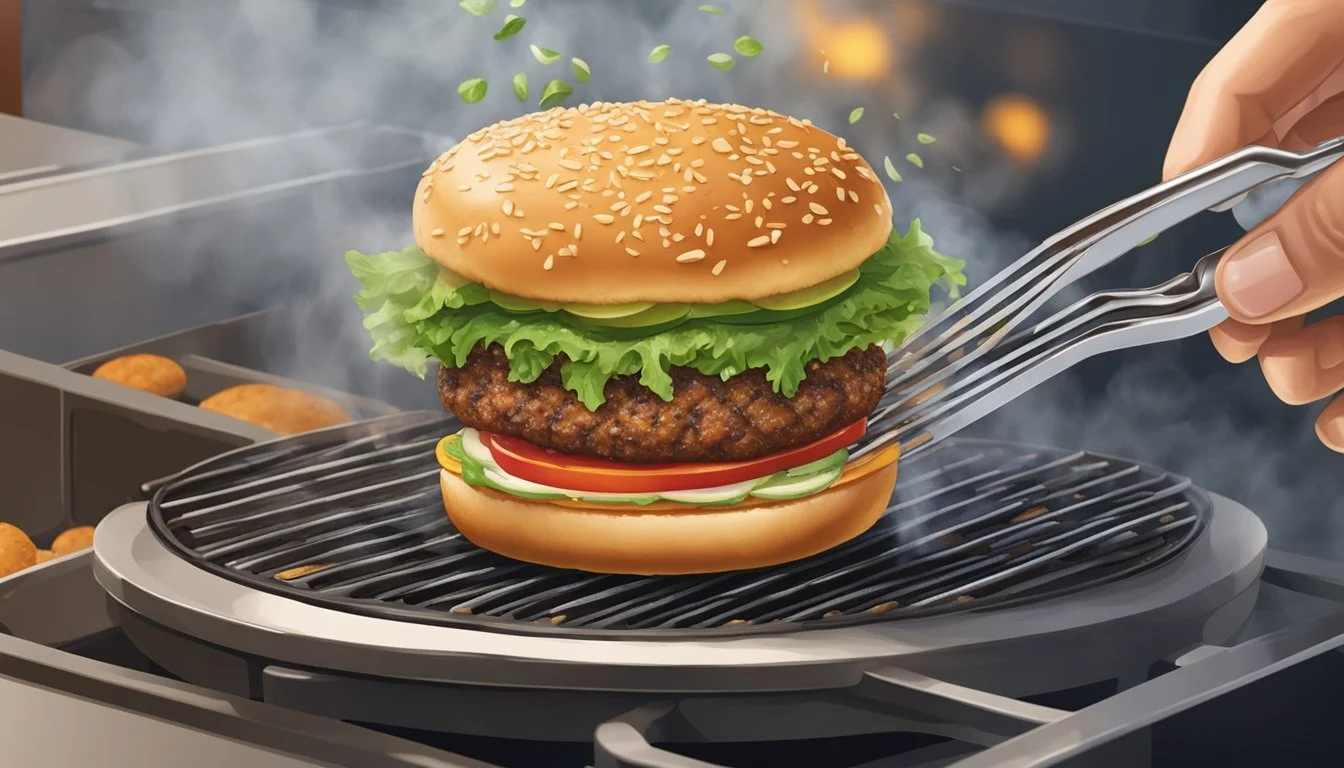How do you eat a quinoa burger?
Tips for Enjoying this Healthy Alternative
Eating a quinoa (What wine goes well with quinoa?) burger is a delightful experience for those looking to enjoy a meatless meal that doesn't sacrifice flavor or texture. Quinoa burgers offer a robust alternative to traditional beef patties, providing a source of protein and a hearty base for a variety of toppings. Thanks to quinoa's versatility, these burgers can be adapted to suit a range of tastes and dietary preferences, making them a staple in the realm of veggie burgers.
The preparation of a quinoa burger begins with cooking the quinoa to a fluffy texture, which then acts as the binding agent in the patty. By combining cooked quinoa (how long does cooked quinoa last?) with ingredients such as mashed beans, vegetables, and spices, chefs can create a rich and savory patty. These can be pan-fried, baked, or even grilled, offering a satisfying exterior crust with a tender interior.
When it comes to serving, quinoa burgers are as customizable as their meat counterparts. They can be topped with traditional condiments like lettuce, tomato, and ketchup, or dressed up with gourmet additions like avocado, artisanal cheese, or homemade sauces. Whether nestled between buns or perched atop a bed of fresh greens, quinoa burgers make for a nutritious and delicious centerpiece to any meal.
What Is a Quinoa Burger?
A quinoa burger is a plant-based patty composed primarily of quinoa, a nutrient-dense grain. It's a popular alternative to meat-based burgers and offers a different texture and flavor profile, often combined with ingredients like beans and various seasonings to enhance taste and nutrition.
Nutritional Profile
Quinoa is known for its high protein content and contains all nine essential amino acids, making it an excellent source of complete protein for vegetarians and vegans. A typical quinoa burger not only packs protein but is also rich in dietary fiber, which aids digestion. In terms of calories, quinoa burgers are generally lower in calories than traditional beef burgers, providing a healthier option. They also contain vitamins and minerals such as iron and magnesium.
Protein: High in complete protein
Fiber: Rich in dietary fiber
Calories: Lower than beef burgers
Nutrition: Contains essential vitamins and minerals
Comparison with Other Veggie Burgers
Compared to other veggie burgers, such as those made from black beans or other vegetables, quinoa burgers tend to offer a more complex texture and a nuttier flavor. While black bean burgers are known for their heartiness and fiber content, quinoa burgers are distinct for their complete protein advantage and versatility with various ingredients. Each type of veggie burger offers a unique nutritional profile, with quinoa burgers generally providing a more balanced amino acid range and often being suitable for those on a gluten-free diet.
Protein: Quinoa burgers provide complete protein, unlike many other veggie burgers.
Texture: They offer a unique, nutty, and often crunchy texture.
Versatility: Quinoa can pair well with a wide array of ingredients.
Diet-friendly: Often gluten-free and suitable for various dietary preferences.
Selecting Ingredients
Creating a mouthwatering quinoa burger involves choosing high-quality ingredients that not only complement each other in flavor but also work together to provide structure and texture. Here is a breakdown of the essential components.
Grains and Binders
For the base of the burger, quinoa is the shining star, but it requires a binder to hold the patty together. Common binder options include:
Eggs: They act as a great binder while adding moisture.
Oats: Can provide a chewier texture and are an excellent binder.
Breadcrumbs: Help in forming a firmer patty structure.
Flour: A small amount can also function as a dry binder.
One must carefully balance these ingredients to ensure the patty is cohesive and not too crumbly or too dense.
Vegetables and Flavor Enhancers
Vegetables not only add nutritional value but also enhance the overall taste and juiciness of the burger. Consider incorporating these ingredients:
Red onion or onion: for a slight sweet and sharp taste.
Garlic: for a pungent, aromatic kick.
Tomato: adds juiciness and a mild, tangy flavor.
Fresh vegetables like lettuce: provide a crunchy texture.
These ingredients should be finely chopped or minced to integrate seamlessly into the patty and offer bursts of flavor.
Spices and Seasonings
The right combination of spices and seasonings will elevate the quinoa burger from good to great. Make use of:
Salt and Pepper: foundational seasonings for enhancing all other flavors.
Cumin: contributes a warm, earthy note to the mix.
Oregano: adds a hint of aromatic, sharp flavor.
Be precise with the measurements to ensure a well-balanced taste profile that doesn't overpower the delicate flavor of quinoa.
Preparing the Quinoa Burger Mixture
Constructing a quinoa burger mixture involves cooking quinoa to the right consistency, blending it with complementary ingredients for flavor and texture, and forming it into patties.
Cooking the Quinoa
One begins by thoroughly rinsing quinoa to remove its natural coating, saponin, which can cause a bitter taste. The standard cooking ratio of quinoa to water is one to two. Boil the water, add the quinoa, reduce to a simmer, and cover for about 14-18 minutes or until the grains become translucent and the germ has spiraled out from each grain. A well-cooked quinoa has a fluffy texture that's crucial for the burger's structure.
Mixing Components
Before mixing, one should ensure the quinoa is cooled to prevent the eggs, if used, from scrambling. For a binding mixture, black beans are a common component and should be mashed until they form a paste-like consistency, providing both texture and flavor; a food processor can ease this process. Seasonings like black pepper and others of choice can make the patty spicy or savory as desired. Ingredients such as tomato paste, breadcrumbs, or oats are integrated to help in binding, while chopped greens or other vegetables can add extra texture and nutrition.
Ingredients:
Cooked and cooled quinoa
Mashed black beans
Breadcrumbs or oats
Beaten eggs (optional for binding)
Tomato paste
Seasonings (e.g., black pepper, salt)
Forming the Patties
Once the ingredients are mixed, the next step is to form patties. The size can be adjusted based on personal preference, but generally, a ½ cup of the mixture is enough for one patty. The mixture should hold together well. If it's too dry, a small amount of water can be added. If too wet, more breadcrumbs or oats may be necessary. The final mixture is divided and shaped into even patties, which are then ready to be cooked to a desired level of crispness. This process should be approached with care to ensure patties that will stay intact during cooking.
Patty Forming:
Measure a ½ cup of mixture for each patty
Gently shape into rounds and flatten to desired thickness
Ensure patties are compact and hold together
prep time is efficiently used during the mixture stage, as it sets the foundation for an easy cooking process ahead.
Cooking Methods
When preparing quinoa burgers, selecting the right cooking method is crucial for achieving the desired texture and flavor. Each method imparts a distinct taste profile and crispness to the burgers.
Grilling the Burgers
To grill quinoa burgers, one should preheat the grill to a medium-high heat to ensure the patties cook evenly. This cooking method usually yields a flavorful, slightly smoky taste. The burgers should be gently flipped once to achieve optimal grill marks and prevent falling apart. Typical grill time ranges from 8 to 10 minutes.
Baking in the Oven
Baking quinoa burgers in an oven preheated to 375°F (190°C) is an efficient method to cook multiple patties simultaneously. This method produces a uniformly crisp surface and takes about 20-30 minutes. The patties should be placed on a parchment-lined baking sheet and turned halfway through the baking time to ensure they are cooked evenly.
Frying on the Stovetop
For frying on the stovetop, a skillet should be heated over medium heat with a thin layer of oil to avoid sticking. This approach allows the burgers to develop a crispy exterior. Each side requires about 5-7 minutes to cook until browned, ensuring they're flipped carefully to maintain their shape.
Using an Air Fryer
An air fryer offers a healthier alternative to traditional frying, circulating hot air to cook the quinoa burgers with minimal oil. Cook time in an air fryer is approximately 8-10 minutes at 360°F (182°C), and the patties should be turned once during the process for an evenly crispy crust.
Serving Suggestions
A quinoa burger offers versatility when it comes to serving options. One can opt for various buns and wraps, a plethora of toppings and accompaniments, as well as a selection of sauces and condiments to enhance the flavors of their burger.
Choosing the Right Bun
When selecting a burger bun for a quinoa burger, one has the choice of classic whole wheat buns for a nutty flavor and added fiber, or gluten-free options for those with dietary restrictions. For a low-carb alternative, lettuce wraps serve as a fresh, crunchy substitute to traditional buns.
Toppings and Accompaniments
Quinoa burgers pair well with a variety of toppings. For a classic touch, slices of tomato and lettuce add freshness and crunch. Savory preferences might lean towards caramelized mushrooms and avocado slices for creaminess. To keep the burger plant-based, guacamole serves as a flavorful and rich vegan option.
Fresh: Sliced tomato, Lettuce
Savory: Caramelized mushrooms, Avocado
Vegan: Guacamole
Sauces and Condiments
Appropriate condiments complete the quinoa burger experience. Traditional choices include mayo and BBQ sauce for richness and smokiness. Those looking for a healthier twist might enjoy a dollop of Greek yogurt for tanginess. For vegan quinoa burgers, one could use tamari as a substitute for soy sauce to add a unique depth of flavor.
Classic: Mayo, BBQ sauce
Healthier: Greek yogurt
Vegan: Tamari
Storing and Reheating
Proper storage and reheating are crucial for enjoying quinoa burgers at their best. One ensures the safety and quality, while the other restores the fresh-cooked taste.
Refrigeration and Freezing Tips
When storing quinoa burgers in the refrigerator, it's important to use airtight containers or wrap them securely to prevent moisture loss and odor absorption. They should be refrigerated within two hours of cooking to maintain safety and freshness. In the refrigerator, quinoa burgers can last 2-3 days. For longer storage, freezing is a suitable option. To freeze, place the cooked burgers in a single layer on a baking sheet to freeze initially. Once solid, transfer them to airtight freezer bags or containers. They can be frozen for up to 2 months.
Reheating for Best Quality
To reheat, one can use a microwave, oven, or stovetop. For microwave reheating, cover the burgers with a damp paper towel and heat on high for 30 seconds if refrigerated, or 45-60 seconds if frozen, adding on 10 seconds more if needed. In the oven, preheat to 375°F and heat the burgers on a baking sheet for about 10 minutes if refrigerated or 15 minutes if frozen. Lastly, for stovetop reheating, one should heat a skillet with a bit of oil over medium heat and cook the burgers for a few minutes on each side until warmed through.
Additional Tips and Tricks
Eating a quinoa burger can be as delightful as any meat-based alternative when the right techniques are applied. Ensuring that the patties stay intact, the texture is appealing, and the flavors are rich, greatly enhance the quinoa burger experience.
Preventing Patties from Falling Apart
To stop quinoa burger patties from becoming mushy and falling apart, a binder is essential. Eggs work well as a binder, but for a vegan option, a flaxseed mixture can serve a similar purpose. Integrating breadcrumbs or rolled oats can also help to absorb excess moisture and provide structure to hold the patty together. It’s best to form the patties firmly and refrigerate them before cooking to set their shape.
Enhancing the Burger's Texture
The texture of a quinoa burger is key to a satisfying bite. A mix of cooked quinoa with a combination of other ingredients like brown rice or finely chopped vegetables leads to a more intriguing mouthfeel. One should aim for a contrast in textures by adding ingredients with bite to the soft quinoa. For example, seeds or nuts can add crunchiness, creating a more complex texture.
Making the Burgers More Flavorful
Quinoa has a subtle taste, so incorporating spices can make the burgers more flavorful. A spice blend including smoked paprika, garlic powder, and paprika infuses the patties with depth and a savory profile. Additionally, ingredients like sun-dried tomatoes, feta, and fresh herbs not only add bursts of flavor but also moisture, contributing to both the taste and texture. One should evenly distribute the spices and flavorings throughout the patty mixture for a consistent flavor in every bite.
Variations and Substitutions
When customizing a quinoa burger, one may explore different dietary needs or taste preferences through various substitutions. These can range from gluten-free and vegan options to experimenting with different beans or grains to suit one's palate.
Gluten-Free and Vegan Options
If someone requires a gluten-free quinoa burger, traditional breadcrumbs can be substituted with gluten-free breadcrumbs or rolled oats. For a vegan version, eggs, commonly used as binders, can be replaced with flaxseed or chia seed mixtures. These not only bind the ingredients but also add nutritional value.
Different Bean Varieties
While black beans are commonly used for their firm texture and rich flavor, one can also use other beans like kidney beans, chickpeas, or lentils. Each bean type offers varying tastes and textures, providing ample opportunity for customization.
Example of bean substitution:
Black Beans → Kidney Beans (for a firmer patty)
Black Beans → Chickpeas (for a nuttier flavor)
Alternative Grain Choices
Quinoa is favored for its complete protein profile, but one can also consider other grains such as brown rice or bulgur. These alternatives offer different textures and nutritional profiles that can enhance the quinoa burger's taste and health benefits.
Grain substitution table:
Original Grain Alternatives Texture Change Nutritional Benefit Quinoa Brown Rice Chewier Rich in Selenium and Manganese Quinoa Bulgur Softer High in Fiber and Iron
By considering these substitutions, one can create a quinoa burger that caters to dietary restrictions and personal taste preferences, ensuring a satisfying meal without compromising on flavor or nutrition.
Frequently Asked Questions
What is a quinoa burger? A quinoa burger is a vegetarian patty made primarily from cooked quinoa. It might also include other ingredients such as beans, breadcrumbs, and seasonings to enhance its flavor and texture.
Can quinoa burgers be a source of protein? Yes, they are typically high in protein, especially when beans or legumes are included in the recipe. Plant-based protein is beneficial for maintaining muscle health and contributing to overall nutritional needs.
Are quinoa burgers suitable for meal prep? They are an excellent choice for meal prep; they can be refrigerated and maintain their texture and flavor, making them a convenient and healthy option for lunches or quick dinners throughout the week.
How do you cook a quinoa burger?
Method Instructions Skillet Cook in oil over medium heat until browned. Oven Bake at a moderate temperature until heated through. Grill Grill on medium heat, ensuring they don't fall apart.
How do you serve a quinoa burger? Quinoa burgers can be served on a bun or lettuce wrap, adorned with toppings like avocado, tomato, lettuce, and condiments such as ketchup, mustard, or vegan mayonnaise. Alternatively, they can be featured atop salads or alongside vegetables for a lower-carb option.
What are common accompaniments with quinoa burgers? They pair well with side dishes like sweet potato fries, salads, grilled vegetables, or coleslaw, complementing the nutrient-rich profile of the quinoa burger.
Conclusion
Quinoa burgers offer a healthy and satisfying alternative to traditional meat patties. They have a naturally tender texture, which is complemented by a flavorful array of spices and ingredients. When one eats a quinoa burger, they are indulging in a meal that is not only rich in plant-based protein but also packed with essential nutrients.
To best enjoy a quinoa burger, it should be served on a toasted bun or bed of greens with a side of choice garnishes. The versatile flavor profile of quinoa burgers pairs well with various toppings. Here are some popular options:
Cheeses: Feta, cheddar, or vegan cheeses can add a creamy texture.
Sauces: Classics like ketchup and mustard or inventive spreads like avocado aioli provide a moisture and tang.
Veggies: Lettuce, tomato, and onion offer a fresh crunch to the burger.
One should remember that the balance of ingredients enhances the overall taste experience. Quinoa burgers can be adapted easily for various dietary needs and preferences without compromising on the flavor and heartiness of the meal. Whether one is a vegetarian, vegan, or simply seeking to incorporate more plant-based meals into their diet, quinoa burgers are an excellent choice. They demonstrate that healthy eating can be both delightful and uncomplicated.

